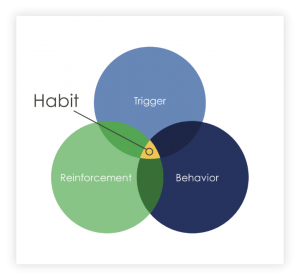
Simple ways to engineer your team’s momentum.
To paraphrase the law of inertia, a team at rest tends to stay at rest. And a team in motion tends to stay in motion.
For some organizations, 2020 slowed us down. While we haven’t been at “rest,” it certainly hasn’t been business as usual. Many organizations have slowed due to lower demand, inefficient virtual collaboration, sluggish cash-flow, and uncertainty about the future.
We now see a shift. People are optimistic about a return to normal. But we can’t just flip a switch. How do you push through the bad inertia and get your team humming again?
With three time-tested tricks: trigger, action, and reinforcement.
Does that sound familiar? Maybe you’re flashing back to Psych 101? Yes, we can use the principles of operant conditioning to change behaviors and create new habits that drive momentum.
The Habit Wheel

Get your team on The Habit Wheel.
Quick refresher: we experience a trigger, we exhibit a behavior, and we get rewarded. If we repeat that cycle enough, it becomes less intentional and more automatic. That’s when we have a habit. Habits are powerful, because they sort of run on their own. So good habits are powerful; harnessing good habits creates positive momentum for a group.
So how do we use this to create team momentum?
- Behavior. Pick actions that are easy and important. That’s the sweet spot.
- Trigger. Make it clear and distinct. When people experience that trigger, they should know exactly what to do, when to do it, and how to know when they get it right.
- Reinforcement. Reward those who complete the behavior successfully. The reward depends on the situation. It might be a system response, a tangible reward, feedback from a supervisor, or public recognition. For extra credit, spread success stories. Focus the team’s attention on these “wins.” It’s another layer of reinforcement.
Remember, our goal is habit—behavior that is self-perpetuating. Once you layer the right habits across the team or the organization, you have momentum.
Example
Send an email, reminding your team of the reason you need change, and telling them you’re taking small steps. Lay out your momentum plan and highlight the benefits for the team.
Then, every Monday, email then team with one small action you want to see that week. Include examples and ways to tell when they’ve done it right.
Subject: This week, open all meetings with your intended outcome.
Team,
We’ve been talking about taking our meetings to the next level. Now it’s time to put it into action.
This week, please open every meeting by defining your intended outcome. For example, “The goal of our meeting today is 100% agreement on the project timeline.”
On Thursday, I will ask you for examples of how it went – good, bad, or indifferent. I’m looking forward to your stories!
Throughout the week, informally recognize the behavior when you see it.
Thursday, send an email asking for stories about how it worked during the week.
Subject: How did your meetings go?
Team,
This week I asked you to open every meeting by defining your intended outcome. How did it go? I’m interested in specific examples — good and bad — of your experience. Thanks!
Then, on Friday, feed the stories back to the team and call out great performers.
Subject: FW: Pam did a good job starting her meeting.
Team,
Here’s John’s experience from Pam’s meeting (see below). Good learning here for all.
Pam, I love your idea of the flipchart page and circling back at regular intervals.
John, thanks for sharing! I appreciate the leadership from both of you.
Make sure to follow through by responding to your team’s reactions. You asked for both positive and negative, right? So help individuals get unstuck, exhibit the behavior successfully, and address any concerns they have.
It might seem incredibly simple, but these small disciplines can unlock your team’s momentum. Try it.




